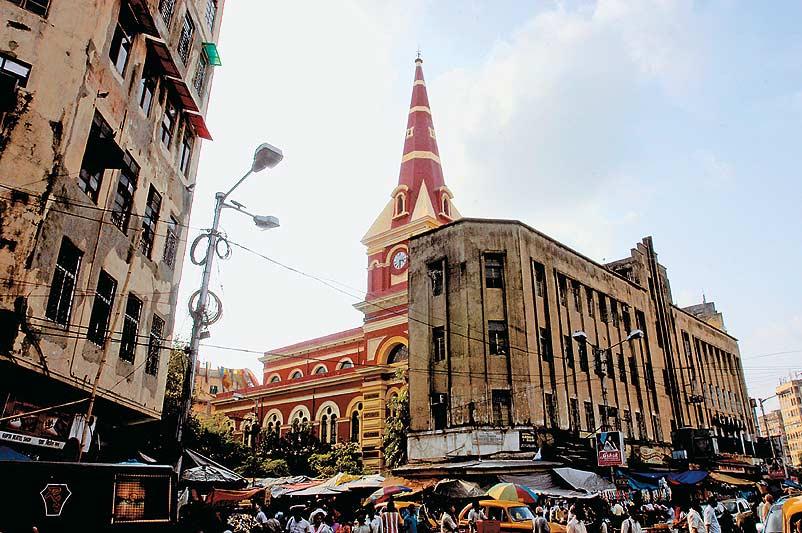I am at Synagogue Street, at the crossing of Canning Street and Brabourne Road, visting an area
Even today, Maghen David is described in visitors’ books as the “most splendid synagogue in all Asia” and the din outside its periphery only heightens the calm I feel on its precincts. The synagogue is truly a picture of grandeur. Replete with an ornate Holy Ark, a beautifully-carved tebah (an elevated platform for reading the Torah), stained-glass windows shaped as the Tablets of Stone, Hebrew plaques and polished furniture, the immaculate interiors even in their silence reflect a sense of bustling times. Of times when stylish Aunt Dorothy Benjamin, our warm-hearted neighbour, would be here every Saturday morning to attend service. Like most of her Jewish friends who lived around Park Street, Aunt Benjamin had a weekly routine. I remember Sunday was reserved for the races, Tuesday for poker, Thursday for the salon and so on. Indeed, it was this upbringing, on the template of discipline so imperative to the old world, which for years brought us an eagerly awaited treat every Shabbat.
Like clockwork, she would send across an appetising dinner tray with customary fare prepared by her Muslim bawarchi, a typical aspect of Jewish households in Calcutta. What made our eyes gleam were the three staples: chicken-okra stew, aloo makala — a scrumptious Middle Eastern-Indian hybrid wholly irreverent to the term called calories — and the dessert, which during winters was almost always a delectable apple kugel. Friday nights were never the same after Aunt Benjamin.
There was a sizeable Jewish population in Calcutta who followed these customs and lived a lifestyle of cultural assimilation. My recollections are about two decades old and a lot has altered in Calcutta’s Jewish landscape since. The Star of David barely hangs in a handful places what with the Cohens, Ezras, Myers and Benjamins having gone separate ways.
“We are opportunists. Wherever ports of commerce call, we sail,” said 80-year-old David Nahoum when I met him at his usual spot behind the antique wooden cash register. He is the third-generation owner of Nahoum & Sons. This 1902 vintage confectioner’s at New Market has had the city’s loyalty despite plush newcomers; Calcutta returning to it time and again for its trademark rich fruit cake, water biscuits, baklava, cheese sambusak… or perhaps simply for nostalgia. David Nahoum has seen the Jewish graph change, and having resisted the temptation to emigrate, is today the torchbearer of the dwindled community. Nahoum is affable and his characteristic personal attention to customers remains intact even as he oversees the running of the shop.
Amid that flurry he recounted to me Calcutta’s Jewish history that began when Iraqi Jews or Baghdadis started settling here towards the late 18th century. “We are philanthropic builders, too, and leave a rich legacy wherever we set foot,” he says. As I left, he gave me a handwritten note that allowed me entry into Maghen David, one of the only two shining remainders of Jewish glory — its synagogues — of which he is the guardian.
Barely five minutes from Maghen, traffic hurdles notwithstanding, is Beth El Synagogue on Manook Street, off Pollock Street. The slim street is flanked with shops wholesaleing birthday-party material and I bump into balloons and Donald Duck masks before arriving at the 1855-built edifice. It’s simpler than the other yet striking, the faint-yellow structure complementing the blue-toned stained glass vertical panels at the entrance. The sanctum sanctorum is sun-drenched and gives a frequented feel. It’s the only active synagogue in Calcutta and, if there’s sizeable attendance during Passover week, the matzoh or mussa, the cracker-thin unleavened bread, is still sold.
While these two synagogues speak of a celebrated legacy, in the vicinity stands a crumbling structure — the Neveh Shalome Synagogue, Calcutta’s first-ever that was established in 1826.
Kolkata
Maghen David
synagogues
Leave a Reply
You must be logged in to post a comment.


